Yesterday was Valentine’s Day and the ship pulled out all the stops to make it a festive occasion – decorating the restaurant in spectacular style. A very good evening.
Earlier in the day I was interviewed by a delightful German lady, Irene, who is doing a blog – in German – about the interesting people she has met on the cruise. As Irene speaks no English and I no German, her friend Cornelia acted as translator. Irene offered an open invitation to visit her in the Black Forest and said she would organise an event at her local library so I could do a reading! I think my lack of the requisite language skills will rule that out!
Early on the morning of the 15th we arrived at Bay of Islands in New Zealand. We anchored in the bay and tendered to shore. Immediately I decided this was my favourite place so far on the voyage. It is a magical place of sparkling turquoise waters, green rolling hills, a mosaic of tiny islands and white sailed yachts. Pristine pretty beach houses dot the edges of the bay with immaculately maintained gardens. Apparently there are one hundred and fifty undeveloped islands and naturally a lot of the action here is based around being on the water.
I went to explore with Pauline, my friend the art teacher, We walked in the early morning along the grassy waterfront to the Waitangi Grounds where the peace treaty between the Maoris and the British was signed in 1840.
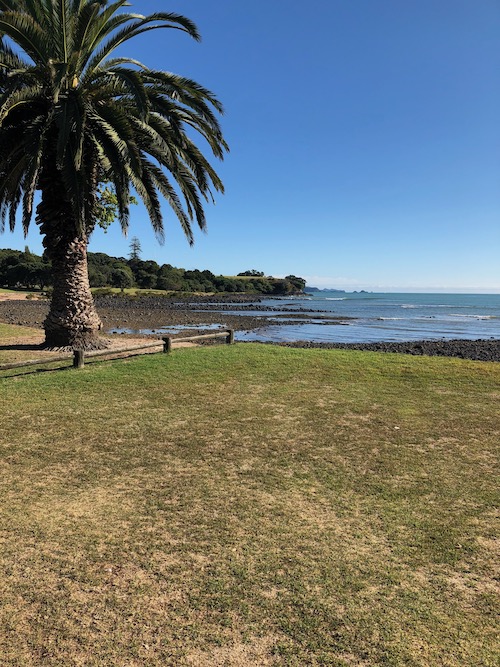
The islands have a sub-tropical climate being the most northerly part of the country. When we tendered across from our ship the first thing that struck us was the scent of manuka – from trees. New Zealand is of course the home of manuka honey – and the name comes from the Maori name for these trees.
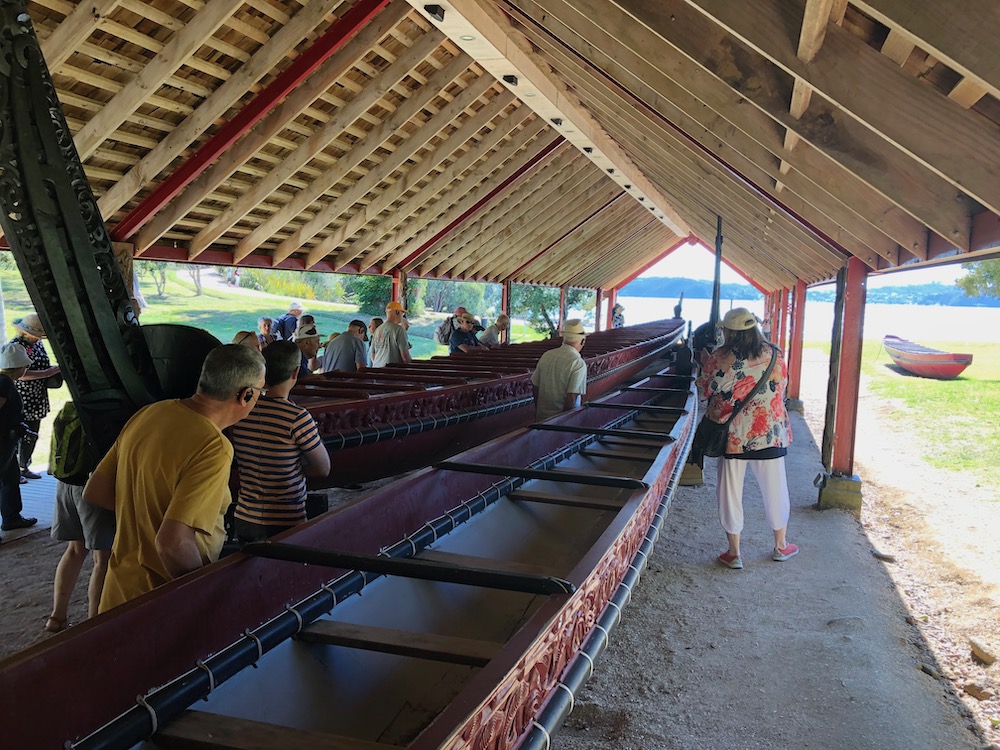
From the museum we were taken on a guided walk through the grounds, learning about Maori history as well as the local flora and fauna. We saw the beautiful long boats – replicas of the original ones used by the Maori. Carved from the kauri tree they are completely waterproof. One of these is seventy-nine years old and still watertight. The covered area where the boats are stored was decorated by stunning Maori carved wooden masks. I fell in love with the Maori carving. Below on the right is a drawing I did using white ink on black paper and inspired by the Maori carvings.
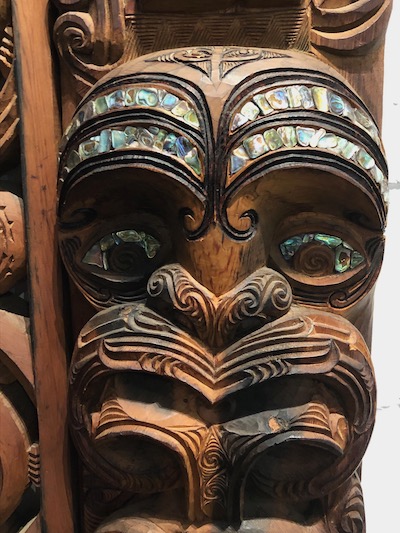
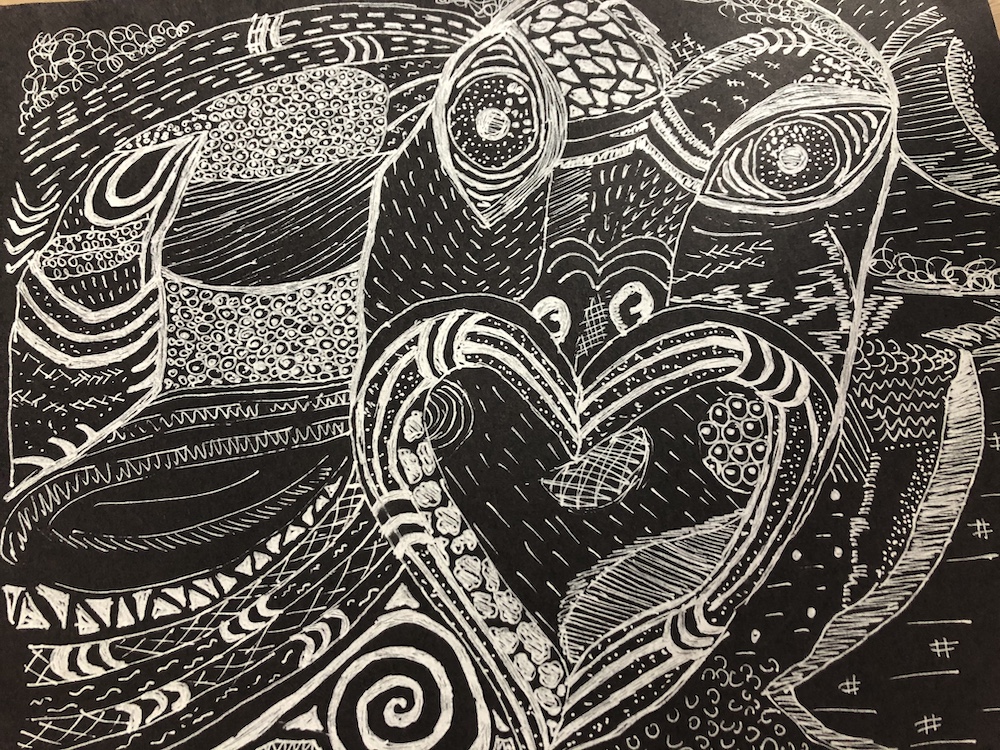
Our next stop was to a wooden meeting hall where we greeted by a young Maori woman who asked us to choose a chief from among ourselves. Silence. Both Pauline and I wanted to step forward but instinctively realised it wouldn’t have been deemed appropriate. Later we asked if it would have been possible for a woman to assume the role and were told no – it was always a man – unless the woman is already renowned as a leader – for example The Queen or Jacinda Ardern. So, instead we got a wimpy old chap – who Pauline shoved forward. He gave a speech that was utterly pathetic – but did cope bravely with having a wooden spear jabbed at his face by an enormous sumo-like Maori chief. We were asked to remove our shoes and hats before entering the hall – of course at least one man failed to comply. I am often ashamed of my countrymen.
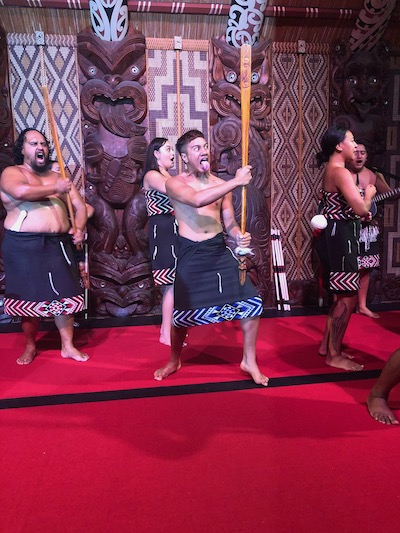
The Maori troupe entertained us to music, dance and ceremonials in a fascinating and spellbinding performance. Some of the singing was very Hawaiian style – unsurprising given their shared origins and a lot of very large tongues were on display!
The Treaty House was next – the former home of the first British government official, James Busby, the official British Resident. Busby had plans drawn up for the house but the government wouldn’t pay for them. He made the case that he needed the status and respect conferred by an appropriate dwelling but had to settle for a simple two–room abode, sharing a bedroom with his wife, four children and any visiting dignitaries! It was he who drew up the Waitangi Treaty – when he heard rumours that France was about to claim sovreignty of New Zealand. The house was gradually extended room by room as Busby became able, After his death (back in Britain – his grave is in West Norwood cemetery in South London the house was sold and fell into neglect until eventually bought in the 1930s by the then Governor General, Viscount Bledisloe and his wife, and donated to the nation along with Waitangi Grounds. Busby’s wife Agnes – pictured below returned to New Zealand after his death. The image on the right below is the view through the window of the Treaty House – and it makes it easy to understand why she would choose to return.

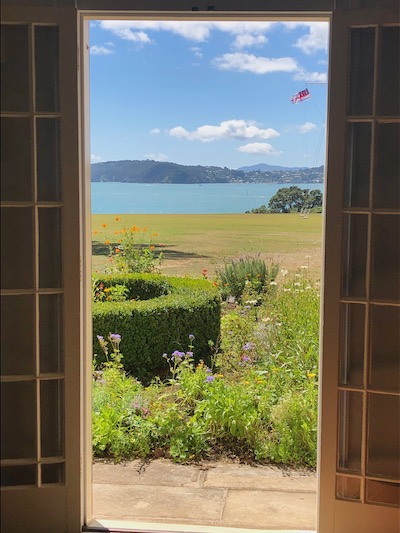
Now ready for lunch we went into the town of Paihia, where we ate overlooking the water. The food was delicious – cauliflower ‘popcorn’ – yummy!, squid, smoked salmon paté and a large glass of excellent New Zealand suavignon blanc. We took a ferry across the bay to Russell. It’s hard to believe that this tiny and pretty place was once the capital of New Zealand. Also hard to believe that it was known as the Pacific’s den of vice and iniquity – it’s now a collection of white colonial houses, hotels, shops and bars overlooking the bay and the yachts.
Deciding to walk to Long Beach we had an exhausting trek up a steep hill to the other side of the island in blistering heat. A gorgeous beach with big rollers made it worthwhile. Pauline swam but I’d forgotten my costume so had to settle for a paddle.
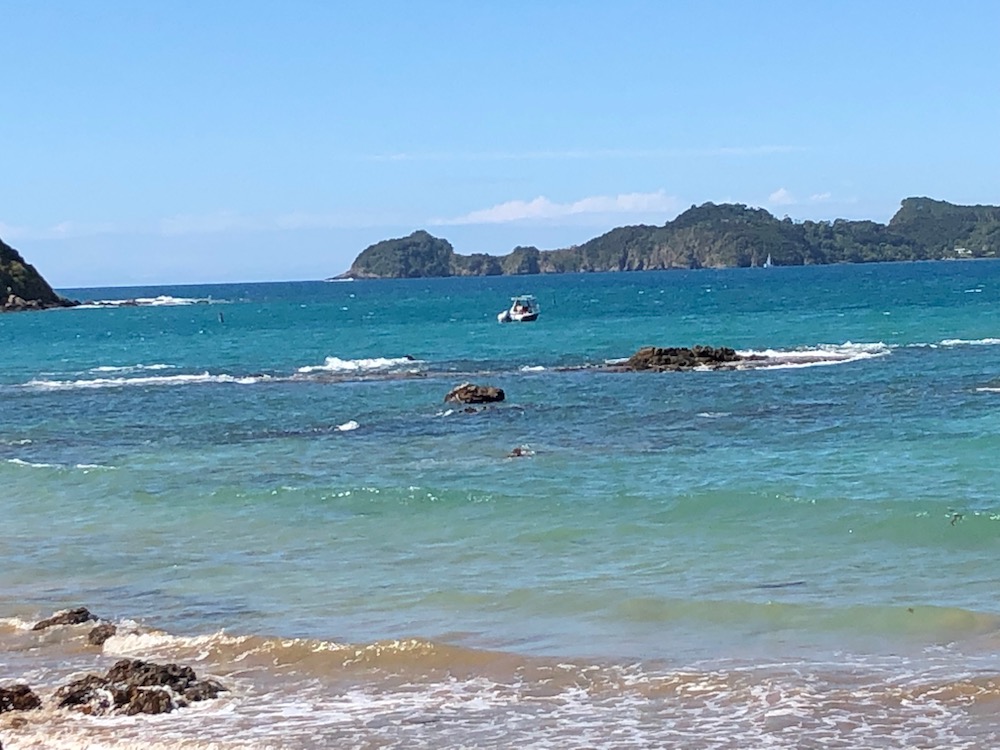
Back in Russell we enjoyed a cold beer at The Duke of Wellington, where we sat outside at a large round table outside overlooking the bay. There was a sign saying it was reserved for locals but the men were very welcoming and even refilled our beer glasses from their large pitcher.
We took the ferry back to Paihia after a truly fabulous day in what is an idyllic spot. As we sailed away back on our cruise ship we had a wonderful sunset. I swore that I would return one day to Bay of Islands.
Next stop – Auckland

Possible Writerly Inspiration
What would it have been like to be in Agnes Busby’s shoes – trying to cope with four children in a tiny two-roomed house? Agnes was born in Scotland in 1800 and emigrated to New South Wales with her parents and siblings when she was thirty. She met James at a party in Sydney and married him in 1832. For the times that makes her an older bride. She was pregnant when they arrived in Waitangi in 1833 and the tiny house was in a dreadful state, forcing them to stay with a local missionary while repairs were done. Busby in a letter home said of Agnes “I often think she is a little lonely here, although she never complains”. Agnew bore four children at Waitangi and later two more when they had moved to a farm in the Bay of Islands. Her fourth child was delivered by her husband as the doctor was delayed. In those first years there was a lot of hostility from the Maoris. Part of the role of the British Resident was to entertain visiting dignitaries and doing so in such straitened circumstances must have proved an enormous challenge. I may yet write this one myself!!! A great excuse to go back to Bay of Islands.

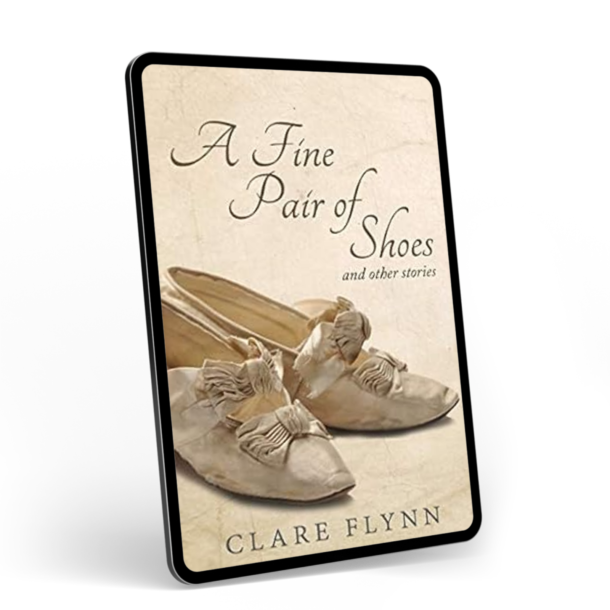
0 Comments